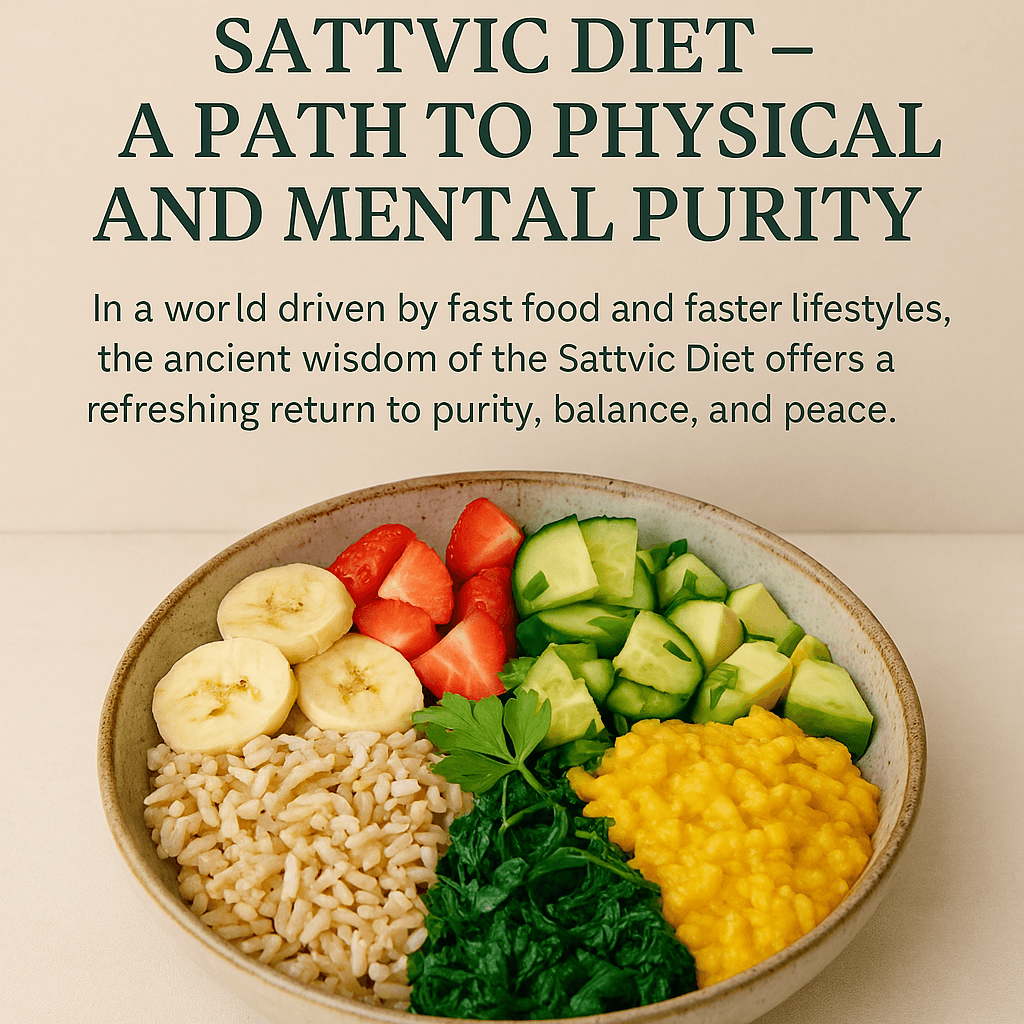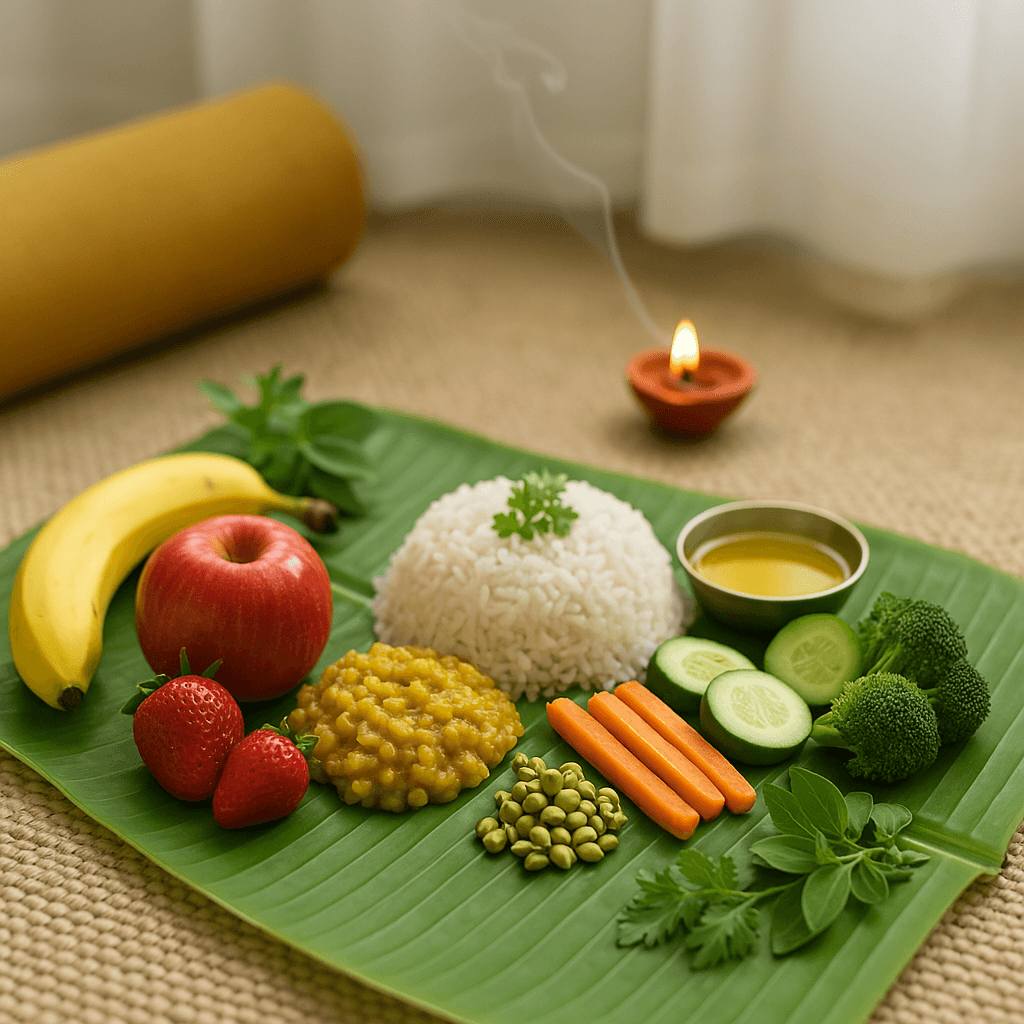
In a world driven by fast food and faster lifestyles, the ancient wisdom of the Sattvic Diet offers a refreshing return to purity, balance, and peace. Rooted in Ayurvedic philosophy and yogic living, this plant-based way of eating is more than just a diet — it’s a way of life that nurtures both the body and the soul.
Whether you’re seeking spiritual clarity, better digestion, or a calmer mind, embracing the sattvic lifestyle could be your key to holistic wellness. In this post, we’ll explore what the Sattvic Diet truly means, the foods it includes and avoids, and the powerful benefits it offers for physical and mental well-being.
What Is the Sattvic Diet?
The term Sattva in Sanskrit means purity, harmony, and balance. The Sattvic Diet is one of the three dietary approaches in Ayurveda — the other two being Rajasic (stimulating) and Tamasic (lethargic).
A Sattvic Diet is primarily:
- Vegetarian (plant-based and cruelty-free)
- Fresh and wholesome
- Prepared and consumed mindfully
It is believed to elevate the prana (life energy) in the body and bring mental clarity, emotional stability, and spiritual growth. This is why it’s traditionally followed by yogis, meditators, and spiritual seekers.
Core Principles of the Sattvic Diet
1. Purity of Ingredients
- Natural, organic, and unprocessed food
- No artificial additives or preservatives
2. Freshness Matters
- Meals should be freshly prepared and eaten within 3–4 hours
- Leftovers and frozen food are discouraged
3. Mindful Cooking and Eating
- Cook with love and positive thoughts
- Eat slowly and in a calm environment
4. Seasonal and Local Eating
- Choose foods that are naturally grown in your region and season
Foods to Include in a Sattvic Diet
Here’s what a typical Sattvic plate includes:
- Grains: Brown rice, wheat, oats, millets
- Fruits: Bananas, apples, mangoes, berries
- Vegetables: Spinach, carrots, gourds, cucumber
- Legumes: Moong dal, lentils, chickpeas
- Dairy (in moderation): Organic milk, ghee, curd
- Nuts & Seeds: Almonds, sesame seeds, flaxseeds
- Spices: Turmeric, cumin, coriander, ginger
- Natural Sweeteners: Jaggery, honey, dates
- Herbal Teas: Tulsi, ginger, chamomile
All foods should be cooked with minimal oil and gentle spices. Onion and garlic are often avoided or used minimally for spiritual clarity.
Foods to Avoid in a Sattvic Diet
Avoid these to maintain sattvic balance:
- Tamasic Foods: Meat, eggs, alcohol, fermented foods
- Rajasic Foods: Overly spicy, salty, or sour items
- Stimulants: Coffee, tea (black), chocolate
- Processed Foods: Packaged snacks, soda, white sugar
- Leftovers or Reheated Food: Especially overcooked or stale food
Physical Benefits of the Sattvic Diet
- Boosts digestion and gut health
- Detoxifies the body naturally
- Enhances immunity and vitality
- Supports healthy weight
- Increases energy without heaviness
Mental and Spiritual Benefits
- Improves focus and inner calm
- Reduces anxiety and restlessness
- Supports meditation and mindfulness
- Cultivates positive, peaceful emotions
- Aligns body, mind, and spirit
Is the Sattvic Diet for Everyone?
Absolutely! Start at your own pace:
- Begin with one sattvic meal a day
- Try sattvic breakfasts or herbal teas
- Gradually reduce processed or heavy foods
Even a partial shift toward sattvic eating can bring noticeable improvements in mood, energy, and spiritual clarity.
Conclusion
The Sattvic Diet isn’t just about food — it’s about living with harmony and purpose. It invites us to nourish our body, calm our mind, and elevate our spirit. With every sattvic meal, we move closer to inner peace and holistic health.
Let this ancient path of purity guide you to a more conscious, vibrant, and joyful life. 🌿
🚀 Let’s Connect!
Looking for expert insights on website development, SEO, and online business growth? Connect with me on LinkedIn or reach out via my website!
🔗 Connect on LinkedIn 📩 Contact Me



